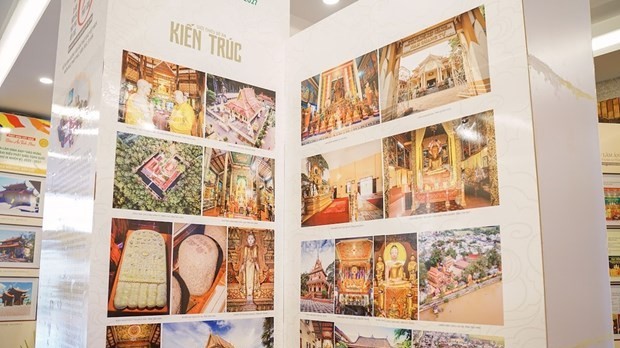
Peaceful days in Bagan
Latest
 |
| Bagan is known as one of the cradles of Buddhism with thousands of temples, pagodas and monasteries with unique architecture. (Photo: Nguyen Hong) |
From Hanoi, after a three-time-boarding trip, I arrived in Bagan at 14:30 (local time) - the land of ancient temples imbued with Myanmar's culture. Looking through the window of the ATR72 aircraft flying slowly and somewhat wobbly, a brown patch appeared in front of my eyes. The city of Bagan then looked like a barren sub-desert with a characteristic red and yellow soil color. A shower had just stopped, moisture in the air increased, creating an uncomfortable feeling.
Due to the COVID-19 pandemic, as soon as I arrived at Nyaung U airport, a bus was waiting to pick me up straight to the hotel. While the bus sped along the rough concrete road, I chose to sit next to the window to watch the large and small pagodas and stupas passing my eyes.
Bagan is an ancient city located in the Mandalay area and was the capital of the Pagan kingdom for 230 years. It is dry land, not adjacent to the sea, with the Ayeyrwady River surrounding its east side.
The ancient Bagan is not only famous as the capital of the first unified dynasty of Myanmar. With many cultural relics of temples and stupas, Bagan, together with the Cambodia's Ankor Wat and Indonesia's Borobudur Palace constitute "the three largest Buddhist architectural complexes in the world". In 2019, the ancient city of Bagan was recognized by UNESCO as a World Cultural Heritage.
It took me around 10 minutes by car from Nyaung U airport to Aureum Palace hotel, which belongs to a chain of hotels built in royal architecture and in the Buddhist style across Myanmar. Along the road, there appeared pagoda roofs and stupa tops with ancient mossy brick floors, interspersed with rows of palm trees and tamarind trees. Occasionally, I came across white cows grazing or lying quietly, and there was no appearance of modern life.
With an area of about 65 square kilometers only, this place used to have approximately 2,500 Buddhist pagodas, temples, monasteries. And only about 2,000 houses have been preserved up to now. Like most regions and states in Myanmar, people in Bagan have the spirit of reverence for the Buddha. Buddhist beliefs are deeply integrated into life.
There were no smoky incense, or noisy worshiping ceremonies but only people with longyi quietly praying in temples - an image that is hard to find anywhere in the world. Perhaps that is why Bagan attracts so many tourists to visit every year.
Most of the pagodas and temples built with bricks unplastered are now peeled off and have access to the top. The stupas in Bagan are also a kind of pagoda and so are many palaces and castles. They are usually bell-shaped, round, square, and even multi-shaped with a common feature of a sharp golden tip.
I climbed the Nan Myint stupa to see Bagan from above. As soon as I reached the top, I was immediately overwhelmed by the sight of countless pagodas and temples in front of my eyes.
Looking at the brown pagodas and temples standing out among the green trees, stretching across the plains, I understood why people called this place the "sea of pagodas" or the "holy land of temples". The ancient capital at that time had an air of silence.
 |
| Ananda is known as the most beautiful temple in Bagan with 4 large golden Buddha statues placed in 4 directions. (Photo: Nguyen Hong) |
On the next day, I visited Shwezigon - the oldest temple that was gilded like the Shwedagon Pagoda in Yangon. According to the tourist guide, Shwezigon was inlaid with 30 tons of gold and thousands of precious stones on the top of the temple's tallest stupa.
About 4km from Shwezigon, there comes Ananda - the most beautiful temple in Bagan with 4 large gilded Buddha statues placed in 4 directions. This masterpiece is well known as the largest, best preserved and most revered temple in Bagan.
And finally, I went to the Htilominlo pagoda, built of bricks and white plaster with skillfully meticulous carvings. It is not only one of the five most ancient temples in the old capital, but also a sacred religious architecture and an unmistakable cultural feature of Bagan.
The scenery and atmosphere in Bagan give people a feeling of harmony and closeness, which made me enjoy wandering around its corners, going to the top of the stupa, and watching the Buddhist followers go in and out of the temple. The sadness all went away then.
The feeling of a strangely wild and peaceful Bagan made my heart nostalgic and maybe so did any other visitors while leaving the city.












